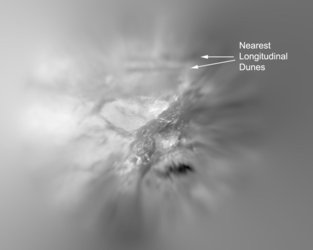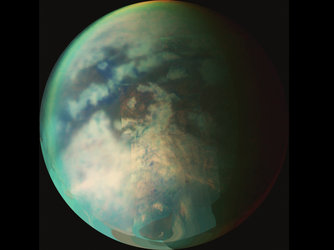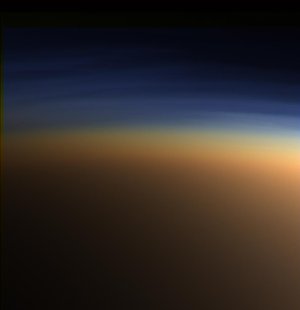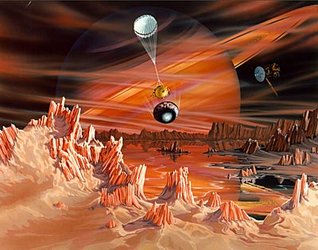The way the wind blows on Titan
A simulation of the winds encountered by Huygens has lead planetary scientists to believe that it’s entire atmosphere is circulating around on a conveyor belt. This huge system of moving gas transports warm air from the southern hemisphere to Titan’s north pole and back again.
As on any body with an atmosphere, the direction and speed of the wind encountered at a single point can be related to the general atmospheric circulation. So by reproducing the winds encountered by Huygens during its parachute descent to the surface, planetary scientists have been able to improve their ideas about Titan.

At first, all they had to go on with was the way in which Earth’s atmosphere behaved. “Some of the early computer models were actually based on Earth’s circulation,” says Jean-Pierre Lebreton, ESA Huygens Project Scientist. To this they added temperature measurements of Titan’s atmosphere taken by NASA’s Voyager spacecraft and the bulk properties of Titan such as the mass of the world, its rate of rotation, the amount of heating from the Sun and the tides experienced by the gravitational pull of Saturn.
Now, they have the wind profile for the entire descent through the atmosphere to add into the mix – and it is making a world of a difference. “Our knowledge of the low-level atmospheric circulation was virtually absent prior to the Huygens mission,” says Tetsuya Tokano, Institut für Geophysik und Meteorologie, University of Köln, Germany, who has been spearheading the new effort at modelling the atmospheric circulation on Titan.

Huygens encountered its maximum wind speed about ten minutes after beginning its descent. The speed was roughly 120 metres per second (or 432 kilometres per hour) and was measured at an altitude of about 120 kilometres. As the probe dropped below 60 kilometres, the wind speed dropped too. During the final seven kilometres of the descent, Huygens encountered wind speeds of just a few metres per second, allowing it to drop in an almost straight line. At the surface of Titan, there was nothing but a gentle breeze of just 0.3 metres per second.

During its descent, Huygens found that the winds were flowing in the direction of Titan's rotation, from west to east. The winds reversed direction twice. The first reversal was at six kilometres and the second occurred just 700 metres above the ground. These points have turned out to be vital in understanding the general circulation of Titan’s atmosphere.
Tokano’s model suggests the upper reversal is caused by temperature differences between the north and south. The lower reversal happens at the boundary between the upper and lower portion of a huge circulating pocket of air, known as a Hadley cell. This extraordinarily large ‘cell’ of rotating atmosphere circulates from the south pole to the north pole and back again and is the principal way in which Titan’s atmosphere distributes its warmth.
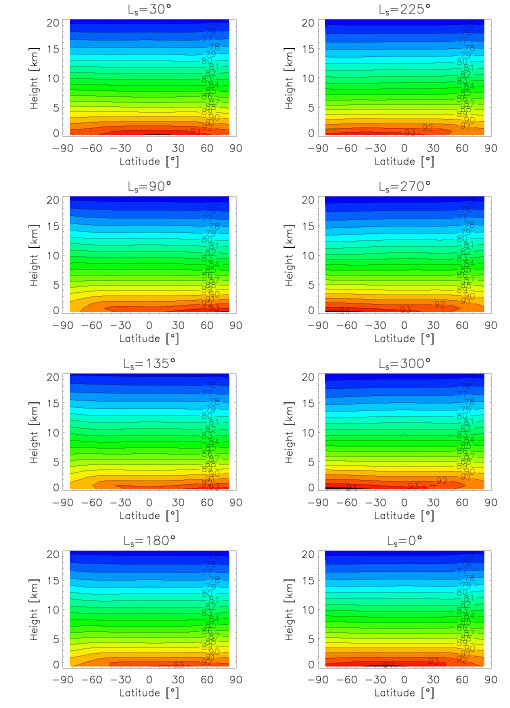
On Titan, the southern hemisphere is currently facing the Sun, making it southern summer on the moon. Warm southern ‘air’ rises and flows towards the colder northern hemisphere, forcing colder air from the north down towards the south. This cooler air is less buoyant and hence flows at lower altitudes.
“At the time of the landing of Huygens, the model suggests that Titan must have been warmer at 10 degrees south than it was at the equator,” says Tokano. Southern summer on Titan will last until 2010, when Saturn’s orbit, which governs the moon’s motion, will tilt the northern hemisphere towards the Sun. Such a large Hadley cell is only possible on a slowly rotating world, such as Titan where one day equals 16 Earth days.
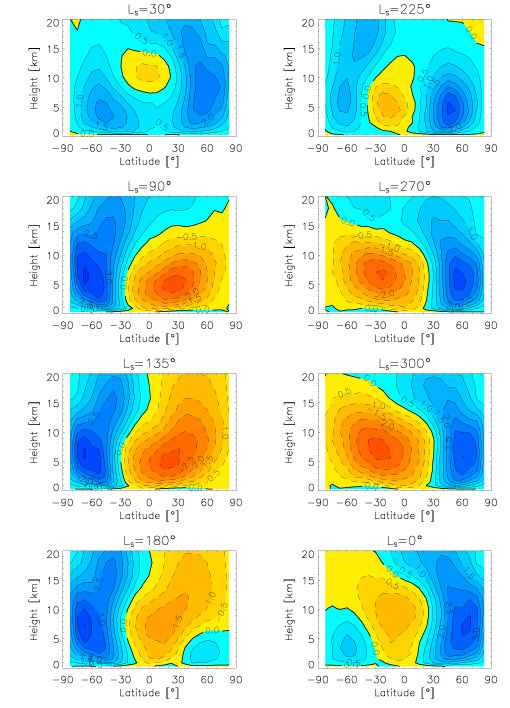
So, even though Titan may superficially look Earth-like, by feeding the details of the winds encountered by Huygens into a computer model of the moon’s atmospheric circulation, planetary scientists have shown that first impressions can sometimes be deceptive. The wind systems on Titan are unlike those on the Earth, even though they are governed by the same physical principles.
This is good news, for it provides a whole new climatological system for planetary scientists to study.
Note for editors
This article is based on two papers to appear in a special issue of the Planetary and Space Science magazine dedicated to Huygens results: ’Near-surface winds at the Huygens site on Titan: interpretation by means of a general circulation model’, by T. Tokano, and ‘Titan atmosphere profiles from Huygens engineering (Temperature and acceleration) sensors’, by R. D. Lorenz.
Cassini-Huygens is a joint mission between NASA, ESA and the Italian Space Agency (ASI).
For more information
Tetsuya Tokano, Institut fuer Geophysik und Metorolgie, Univ. of Köln, Germany
Email: Tokano @ geo.uni-koeln.de
Ralph D. Lorenz, John Hopkins Univ. Applied Physics Lab., MD, USA
Email: Ralph.Lorenz @ jhuapl.edu
Jean-Pierre Lebreton, ESA Huygens Project Scientist
Email: Jean-Pierre.Lebreton @ esa.int







